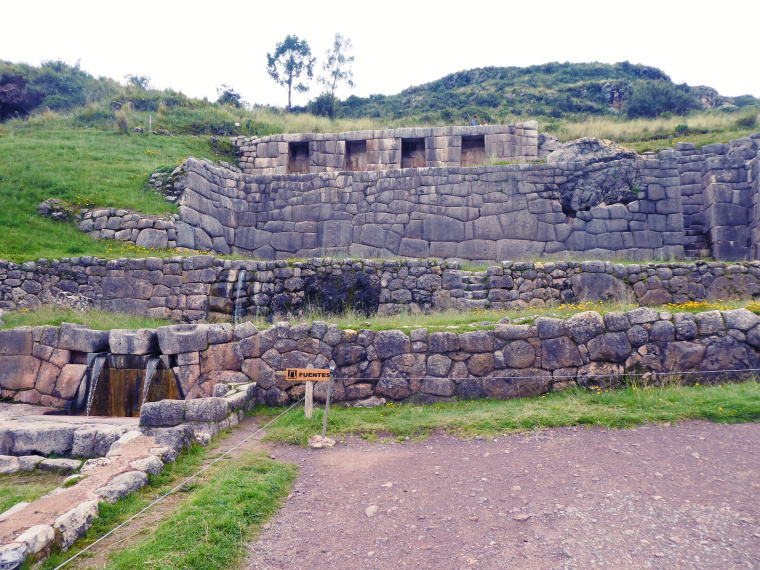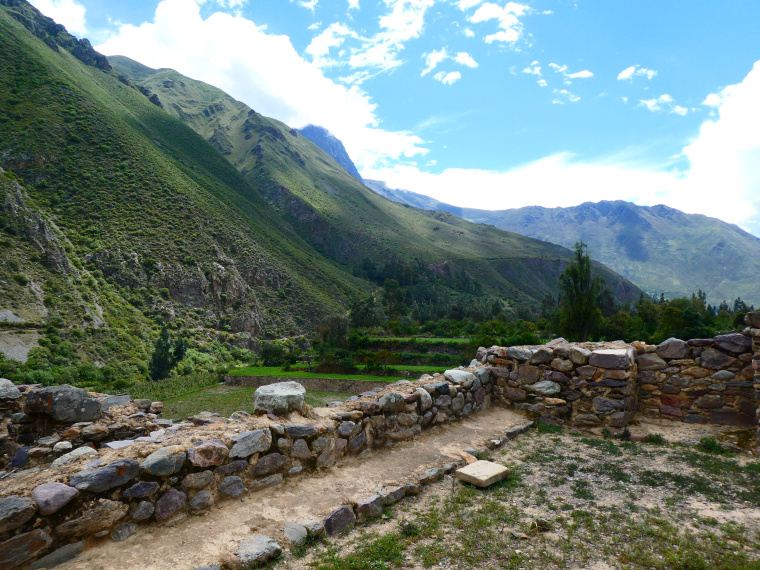El Valle Sagrado de los Incas is, without a doubt, the most famous destination in Peru, and in South America. It houses the Machu Picchu, the never-really-lost Inca settlment atop a breathtaking mountain; and Cusco, the former Inca capital, the city of many treasures. But no doubt about it: for tourists visiting this place for a few days, it’s all about the Incas. While we stayed 3 weeks doing a volunteering job in Urubamba (1.5 hours from Cusco), we had a bit more time to explore the area and see also what is not about the Incas. Hopefully, his guide will help you plan your visit to the sites where we felt the most energy around Cusco, Peru.

What to see in and around Cusco, Peru
Cusco region came up with a smart and pricey solution for tourists wanting to bag several Inca sites: Boleto Turistico. It’s a flat-rate ticket that gives entrance to the main Inca attractions, such as archaeological sites and museums. With a bit of time and good organisation, it’s completely worth getting it.
The most famous sites are included in the boleto –apart from Machu Picchu which has its own super pricey ticket. But it’s perfectly possible to visit other great Inca sites without it, for free.
Actually our best encounters with the Inca culture happened at free sites. First we got the best donation-based guided tour of an Inca purifying ceremonial bath. Then, we saw a Quechua guy offering coca leaves to Pachamama on the top of the Moon Temple during a nice hike just outside Cusco, Peru.
All about the Cusco Tourist Ticket (BTC)
The Integral Tourist Ticket
It’s valid 10 days and gives entrance to 16 sites and museums. You will have to plan well and run around if you want to see them all. It costs 130 soles (35 € / 40 USD).
Here are all the sites you can enter with this ticket:
- Regional Historical Museum
- Contemporary Art Museum
- Folk Art Museum
- Corikancha Site Museum
- Inca Pachacutec Monument
- Native Art Centre
- Saksaywaman
- Qenqo
- Puka Pukara
- Tambomachay
- Pisac
- Ollantaytambo
- Moray
- Tipon
- Pikillacta
- Chinchero

The 3 types of Partial Cusco Tourist Tickets
They cost 70 soles (20 € / 21 USD) each and are available for 3 different routes:
- Circuit 1: valid 1 day and gives entrance to the 4 sites in the Sacsayhuaman archeological park:
- Saksayhuaman
- Qenqo
- Tambomachay
- Puka Pukara
- Circuit 2: valid 2 days, includes all the attractions situated in the historical centre of Cusco and the South Valley:
- Regional Historical Museum
- Contemporary Art Museum
- Folk Art Museum
- Koricancha Site Museum
- Qosqo Native Art Center
- Inca Pachacutec Monument
- Tipon Archeological Park
- Pikillacta Archeological Park
- Circuit 3: valid for a Sacred Valley Tour of 2 days and gives access to:
- Pisac
- Ollantaytambo
- Chinchero
- Moray
It’s important that you always carry your passport (or a copy of it) with you to enter the sites. More info on the official website of the Cusco Tourist Ticket.
Spirituality around Cusco, Peru
There’s a lot of spirituality in the Sacred Valley. Visitors can take part in a lot of different ceremonies, from Pachamama offerings to traditional Inca ceremony; that is without even mentioning the various mantra-chanting events you can see or attend.
In this atmosphere, widely available vegetarian food is a must, which however comes as a surprise in a country where they eat guinea pig!
Read here a few things we discovered about the cosmology of the Incas

Hiking near Cusco
El Valle Sagrado is a nice destination also for those who are not much into Inca history. There are a lot of nice hiking possibilities with beautiful backdrop; the small Quechua-speaking villages dotting the valley allow a glimpse on the rural way of life; a wonderful, working salt mine in Maras that is still functioning without modern technology; and Cusco itself is a vibrant, big city which managed to overcome its heavy Inca past while conserving it for the world.
We also really enjoyed the slow-paced everyday life in Urubamba, an unpretentious little town that is perfectly located. Michael from Passport Explored gives more reasons to visit Urubamba in Peru.

Here in the Sacred Valley, most of the inhabitants are Quechua-speakers, descendants of the Incas.
Want to learn Quechua? Our little guide will teach you the most common words.
Rural life around Cusco, Peru
Rural life is hard. Some small pueblos (villages) have no electricity and water in their crumbling adobe houses; they cultivate crops (mainly potatoes) and keep animals that they sell on the farmers market; and they drink (read: get drunk on) homemade chicha, a fermented corn drink that’s served in one-litre jars in bars.
Talking about bars… pubs and restaurants are purely functional. Forget the hipster bars of any big western city, a few tables and benches along the bare walls will do.



A (very) brief history of the Incas and Cusco
In Peru 3 Pan-Andean cultures of regional integration developed: Chavin (500-100 AD) Wari (from 530 AD) and Inca. The Inca Empire in South America stretched from current day Ecuador until Bolivia; but the conquering Spaniards interrupted it dramatically in 1532.
The Sacred Valley of the Incas (in Spanish: Valle Sagrado de los Incas, in Quechua: Willka Qhichwa) in the Andean Altiplano (highlands) was the heart of the Inca Empire, with capital in Cusco due to its fertile farmlands. Nowadays, we call it Sacred Valley because this area was the direct property of the Inca emperor.
In our understanding, the Incas were very closely connected to nature. They had crazy agricultural experiments, eg. they built micro-climate systems to experiment with crops; on those terraces, they managed to cultivate around 3000 different types of potatoes! They worshipped the forces of the nature as gods and they built their houses with earthquake-safe architectural structures.
On the other hand, they had no knowledge of other things that we would consider elemental; inventions or discoveries that other civilisations had, for example the Romans. The wheel or the written language, were completely unknown to the Incas.
Because they didn’t write, the first sources we have about the Incas come from the conquering Spaniards; but they are not –rather unsurprisingly– the most accurate. Thus there is still much speculation about the Incas to this day.
Read more: Another Peruvian civilisation, the Waris
Cusco
The Inca capital was constructed in the shape of a puma without a head. Its body was the city, the tail where two rivers are meeting. When the emperor Pachacuti created it, he declared that his son would have to build the strongest fortress ever as the head of the puma. This fortress is Saqsaywaman.
Puma is a word originating from the Quechua pumayna meaning “powerful as a lion”. It was one of the most respected animals in pre-Inca cultures, its power is related to the sun.
Sites in the Sacred Valley




An obscure legend tells that Ollantay, an army general, was hopelessly in love with the Inca emperor’s daughter. When the emperor gets wind of it, Ollantay has to flee; finally, he finds refuge here and builds his place. Hence Ollantaytambo, “Ollantay’s inn”.



Read about another amazing site in the Sacred Valley: Choquequirao
How many of these sites had you heard about near Cusco, Peru? Which one attracts you the most?
Share with us in the comments!




Awesome article! I’ve been to all of those sites except for Pisaq and the Moon Temple. The Inca history is so fascinating, did you know that Peru was likely originally called Biru by the Incas but eventually turned into Peru after the Spanish conquest?
Also I find it interesting how many people say that nobody knows what Machu Picchu’s purpose was but in fact we do know that it was used as a royal estate for Pachacuti and that it was not the lost city of the Incas.
You’re very lucky to have done a volunteer program in Urubamba! I was only in Peru for one week and it was not nearly enough time. I need to go back ASAP and really explore all of these fascinating sites more thoroughly.
Thanks for the great, informative article!
Hey Michael, thanks for visiting our blog, happy to have you here 😊
I agree, the Inca history is so fascinating, it’s a pity they didn’t write so we don’t have any written sources to understand them better.
Peru is a great country for learning about past civilizations- in the past I wasn’t so interested but now I really enjoy visiting archeological sites and museums. We spent in Peru 3 months, the longest in one country!